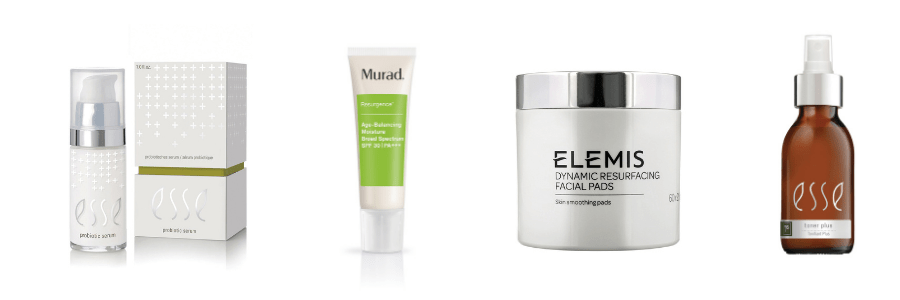As complex and confusing as it may be, looking after your natural bacteria could be the ultimate underpinning to calm and nourished skin. MOJEH discovers the ins and outs of the microbiome…
We know about the importance of friendly bacteria for gut health, but what about friendly bacteria for the face? Just like our intestines, our skin is home to a rich ecosystem of bacteria and other microbes – a unique collection of microorganisms that greatly impact how skin looks and feels – that is the external part of our microbiome. And also just like the gut, the skin’s ecosystem is made up of ‘good’ and ‘bad’ microbes, both of which are required to keep skin in optimum condition. Not only do they help protect against infection, aid in wound healing, limit exposure to allergens and UV radiation and minimise oxidative damage, they keep the skin barrier intact and well hydrated too.
“The microbiome is susceptible to a number of internal and external factors, so anything we do to our skin will change the microbiome balance – from the use of skin products and perfumes, to clothing, sun exposure and environmental pollutants,” explains Rebecca Treston, skincare expert at Dubai London Clinic. “When this healthy composition of microorganisms and bacteria on the skin is disturbed, skin can be adversely affected with bacterial and fungal skin conditions such as eczema, psoriasis, dermatitis and acne.” As such, the microbiome has recently become a hot topic in the beauty world, leading to a new generation of skincare ranges that promise to safeguard or restore the microbiome’s equilibrium, kicking off with the introduction of probiotic skincare. While ideologies are still in their infancy, to keep our microbiome at an optimum level, experts say a combination of pre-, pro- and postbiotics in our beauty products is required to see real results. “Products containing probiotics will not be enough on their own to balance the ever-changing microbiome of each user, because the balance needed is dependent upon the environment that pre-, pro-, and postbiotics create together to help skin protect itself naturally,” says Treston. “You need to consider all three elements together.” So what exactly do the three members of this skincare dream team do? “Prebiotics are supplements or foods that selectively stimulate the growth and/or activity of the skin’s microbes,” explains Treston. “Probiotics are living microbes on the skin, which have a key role in stabilising the microbiome; and postbiotics are the new, beneficial substances that probiotics generate as they break down on and within the skin’s surface. Together they help to facilitate an optimal skin environment and maintain an effective moisture balance, plus they strengthen the skin’s barrier against environmental stressors.”

From left: Probiotic Serum, Esse; Age Balancing Moisturiser, Murad; Dynamic Resurfacing Facial Pads, Elemis; Toner Plus, Esse
The ambiguity and regulatory inconsistencies around probiotics have proved to be a challenge for both the industry and the consumer. “Past probiotic skincare formulations were general in the bacterial species used and claims made for skin health,” says Paula Simpson, founder of Nutribloom Consulting and the author of Good Bacteria for Healthy Skin: Nurture Your Skin Microbiome with Pre- and Probiotics for Clear and Luminous Skin. “Based on evolving research and market expectation, formulations are moving towards synbiotic blends that include appropriate bacterial species, subspecies and strains that support the specific skin-health claims.” Luckily, as labelling, claims and regulations become more cohesive, probiotic-based skincare is evolving as a rapidly advancing market in the beauty space, and we’re going to be seeing a lot of microbiome-focused skincare in 2021 and beyond. Beauty brands including Esse, Exuviance, Elemis, Aurelia Skincare, Mother Dirt and Murad are all already getting in on the act by creating products containing probiotic-derived ingredients, with a great deal of attention also paid to packaging, since the products’ delicate formulas can easily deteriorate through air and light exposure, causing them to break down faster. And while it isn’t possible to sell products containing live bacteria, most will contain preserved extracts such as lysate (derived from Lactobacillus), glycoprotein (from Bifidobacterium) or prebiotic sugars such as xylitol and fructooligosaccharides to feed existing microbes. “Probiotic skincare brands are expanding and intriguing the consumer, but in order to turn this into a macro trend and societal norm within skincare and natural beauty, there is still a lot of work to do,” states Simpson.
Switching a skincare regime to becoming microbiome friendly is no easy feat, but one which will work wonders if done correctly. Firstly, forget about your other products. “If one starts using probiotic skincare, any other skincare products must be avoided. This means stopping using anti-bacterial formulas (usually soaps, some gel cleansers and toners) that kill both bad and good bacteria,” states Angela Turovskaya, founder and managing director of ethical beauty platform Balmessence. “If you choose to use a specific probiotic skincare brand, then invest in their entire range as the brand will carefully design products to benefit each other and not create a conflict.” ESSE is a good starting point: the moment that its probiotic serum touches the membrane, 50 million live probiotics per drop are activated by the moisture on the skin. It also includes harmonising ESSE Toner Plus, which contains prebiotics, the food for probiotics. “Microbiome skincare is so much more than a fad” says Treston. “Clinical studies have shown that gut health is directly linked to chronic skin conditions such as acne, atopic dermatitis and rosacea. Similarly, if you find the right formula of microbiome skincare on the levels of pre-, pro- and postbiotics, it can improve the skin in much the same way.”
Read Next: The Best Turmeric-Infused Beauty Products For Glowing Skin
- Words by Lucy Wildman





